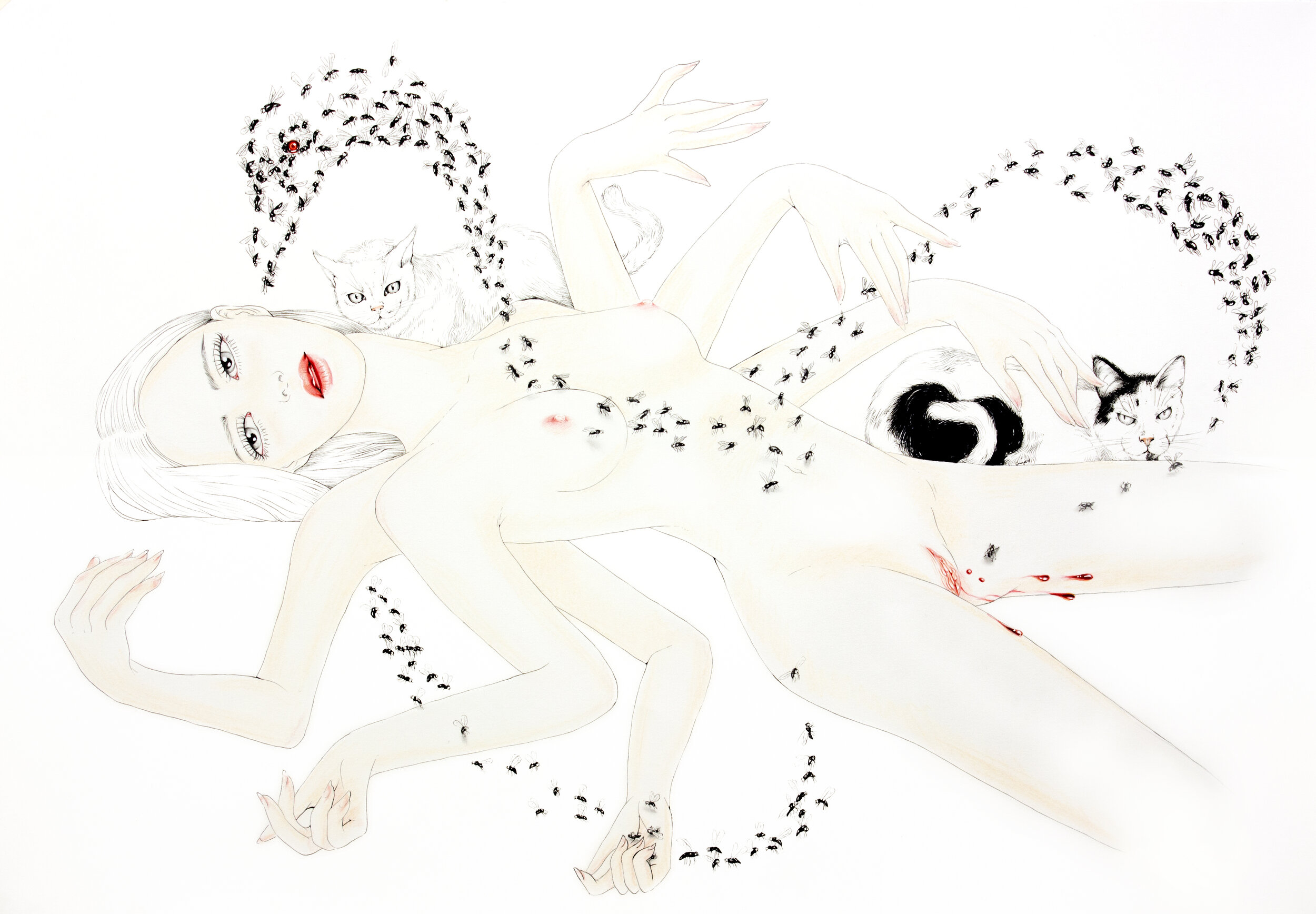ACCIPITE ET MANDUCATE EX HOC OMNES: HOC EST ENIM CORPUS MEUM, QUOD PRO VOBIS TRADETUR
”An innocent look, bleeding vulva, androgynous hip, incipient chest; multiple expressions of the lusty female body punished again and again by an oppressive and violent double morality. It’s what’s in the atmosphere generated by Crajes, a duo that addresses the concepts of desire, pain and pleasure contextualized from the particular iconography of the artists who comprise it: Carla Rendon and Jessica Ruiz. Fantasy, imagination and creativity in abundance have brought their works, with different techniques and formats, this time predominating paper, to address the major taboos of our society about the body. We find in them recurring images that refer to illness, injury, blood or corrupt bodies, bodies always sensual but along with morbidity, crossing boundaries of political correctness to denounce the cynicism and hypocrisy à la manière of the Divine Marquis.The ambiguity and provocation of contemplating a tearful female face flashing a grin that makes you doubt if whether she enjoys or rebels to be free thus leading us to reflection on the attractiveness of the recumbent body, as the famous Minotaur of Picasso apparently forcing a young girl whose body seems however trembling to pleasure. An air of necrophilia is exuded in those scenes full of symbolism, the body in the works of Crajes not being abused, it maintains an erection that is confused between certain shades and erratic baroque style that accumulates tiny characters, bones and objects superimposed on the passionate stage. Regarding the women, as nymphets surrounded by insects and masturbated by kittens, some enjoy a kind of sadomasochistic delirium while others are clearly being abused, stabbed, tied up, humiliated, enduring damage that stain their pale torsos with blood and dips their souls in darkness.This is a wake up towards the roots of double standards of the Judeo-Christian educational base, and the reason why they chose a Latin title making a reference to the origins of the Eucharist: Take and eat, this is my body which will be given for you. Pointing at the imminent betrayal of Judas as opposed to the good intentions of the biblical Jesus who gave his flesh and blood in an act of faith. The religious reminiscence which our current society does not get rid of and who often blames the victim, especially if female, for showing her tempting body or who nullifies their identity if widowed, covering it with a black veil and in both cases, never expecting her to recover, and for her to feel the yoke of hetero-patriarchy, to loll and not reply but … She inevitably does so, demonstrating the misfortunes of virtue.Marisol Solanova







